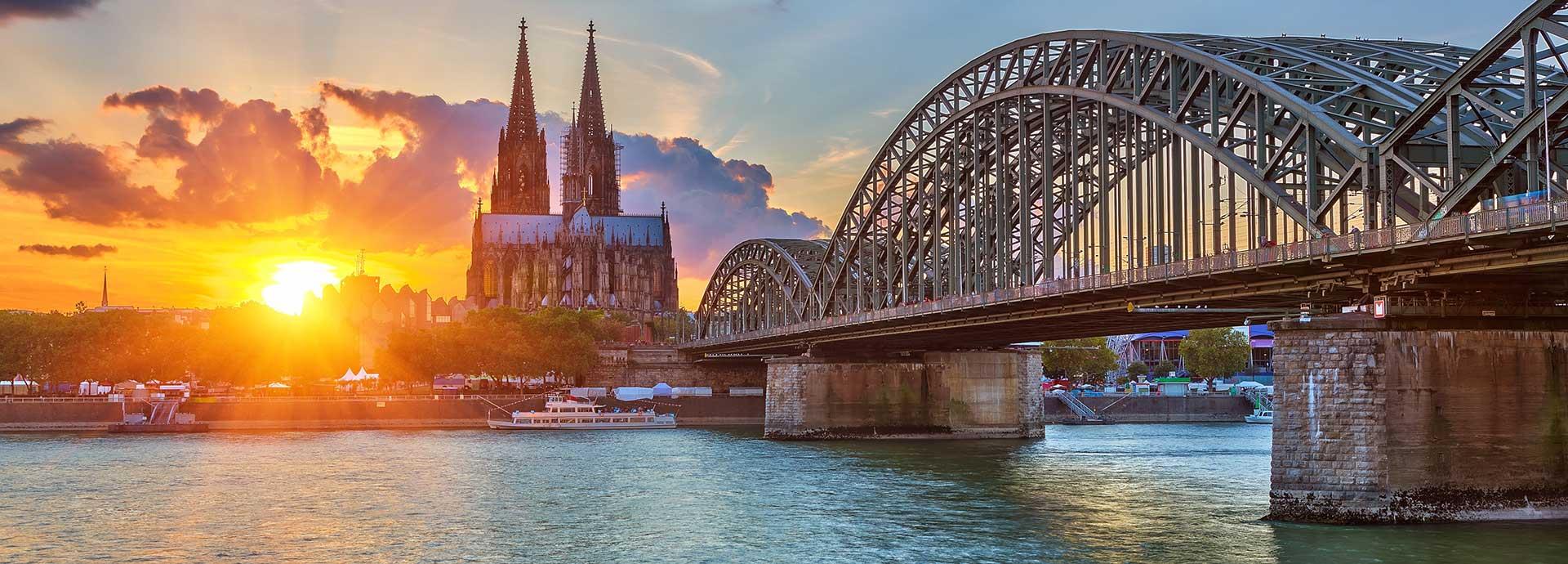

Scorching summers may become the new normal due to climate change. This has resulted in record low levels of water in European rivers and lakes, especially in Germany, causing billions of euros in losses for the inland shipping industry. What are its implications and is there a way out?
A year ago, when economist Thomas Puls of the German Economic Institute, looked out of his office window in Cologne, Germany, he could see a steady stream of traffic floating by on the river Rhine. However, this scene has changed dramatically since the summer of 2018.
After the record hot and dry summer, the water levels in the river sank to its lowest since measuring began in 1881. A high-pressure zone lingered persistently over Northern Europe and 90% of Germany suffered drought conditions. In the city of Cologne, by the Rhine, the water level dropped to a mere 70 cm from the usual well over three metres. This has forced inland shipping operators to either stop shipping or make multiple trips with lighter vessels to transport the same cargo.
Troubled waters
The Rhine is not alone though. Other major rivers like the Danube, the Weser and the Main were affected as well. In Magdeburg, Germany, the Elbe River was so low that ships carrying goods south to Leipzig or to the Czech Republic were unable to pass through. Similar situations were seen across Germany as the region’s shipping industry struggled to cope.
“The relative importance of inland waterways to the German economy has been lost on both the public and politicians alike,” says Puls who feels this is a major reason why the situation got out of hand.
Although approximately 80% of German domestic shipping is done via the Rhine, Puls says only 8.3% of the German transport performance is linked to inland waterways. Its functioning is crucial for important sectors such as the chemical and steel industries. “Since these industries do not have an impact on everyday life, the public does not realise its importance,” he adds.
A ripple effect
After last summer’s dry spell, companies such as the ThyssenKrupp AG, a multinational conglomerate focused on industrial engineering and steel production, and BASF, the largest chemical producer in the world, reported cutbacks in production. There was also an immediate disruption in the supply of heating oil and gasoline in the region, while the agricultural sector took a hit due to delayed or halted shipping operations. This finally succeeded in catching the government’s attention as it tried to deal with the aftermath.
Economists say that the price of gasoline is the modern equivalent to the price of bread as it has a direct impact on all consumer goods and therefore the economy. The disruptions in inland waterways impacted the price of heating oil and gasoline so much that Germany’s Ministry for Economic Affairs and Energy was forced to allow access to gasoline from the country’s crude oil reserves to ease supply.
The agricultural shortage and rising petrol prices, which have a more direct impact on the population, opened many more eyes to the role of inland waterways in European transportation.
Climate models predict global average temperatures to rise between 2.6 °C to 4.8 °C by 2100. This means an increased possibility of different kinds of weather extremes including flooding and heat waves. “We have to be prepared for a situation where the probability of running into drastic weather conditions is common,” says Puls.
The need for an upgrade
So what could be done to be better prepared for the change in weather conditions? “Not much in the short term,” is Puls’ bleak forecast.
Deepening the river beds is an option, but it will be a prolonged process. For instance, the project to deepen the river Elbe downstream of Hamburg has been going on for decades but has seen delays due to numerous court cases which have halted the process. The next best option would be to invest in modernising existing waterways.
“What we can and should do is improve our infrastructure,” says Puls. “Many of the inland waterway structures are outdated in their ability to meet demands of modern transport. We have too many old canals and way too many low bridges dating back to even the Kaiserreich era. The problem thus escalates when water levels change.”
“The long-lasting, low-water level, especially on the Rhine, highlights the industry’s strong dependence on stable conditions for freight shipping on waterways. The aim is, therefore, to eliminate bottlenecks as quickly as possible,” says a spokesperson from Germany’s Federal Ministry of Transport and Digital Infrastructure.
A more sustainable option
The government has in fact decided to invest EUR 24.5 billion in improving the infrastructure of the Rhine. “This is aligned with the preparations for the risks of climate change,” adds the ministry spokesperson.
Investing in inland waterways is also necessary since alternative transport modes are not feasible. “The rail network and the autobahn are already very crowded and industries such as steel, that require capacity, cannot be easily transferred to rail or road,” says Puls. “Inland waterways are actually the only transport system in Germany that still has some free capacity, particularly along the crucial Rhine route.”
Interestingly, inland waterways can have an important role in combating climate change as well. Transportation via inland waterways is more environmentally sustainable compared to rail or road. The energy consumption per kilometre on the waterways is 17% of what is consumed when the same cargo is transported by road and half of what the railways would consume.
There are about 37,000 kilometres of inland waterway routes crisscrossing Europe, connecting hundreds of cities and tying member countries together. Its potential for growth, if upgraded and cared for properly, is massive.


